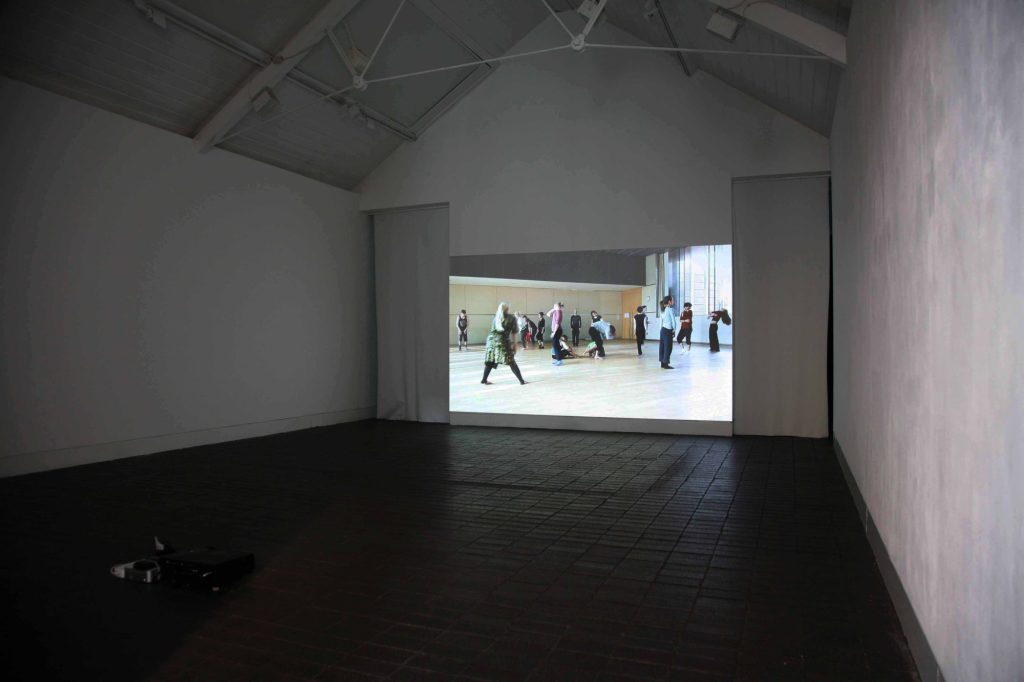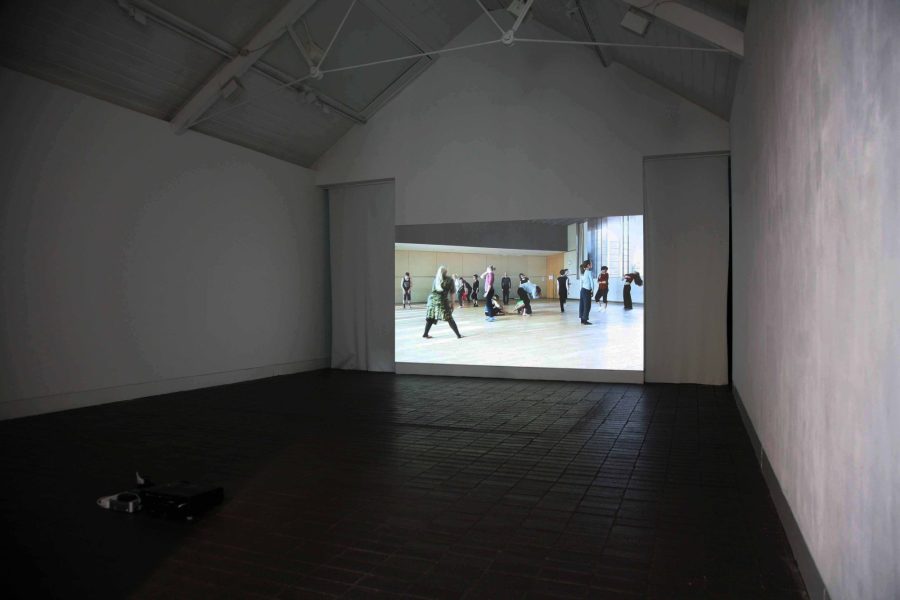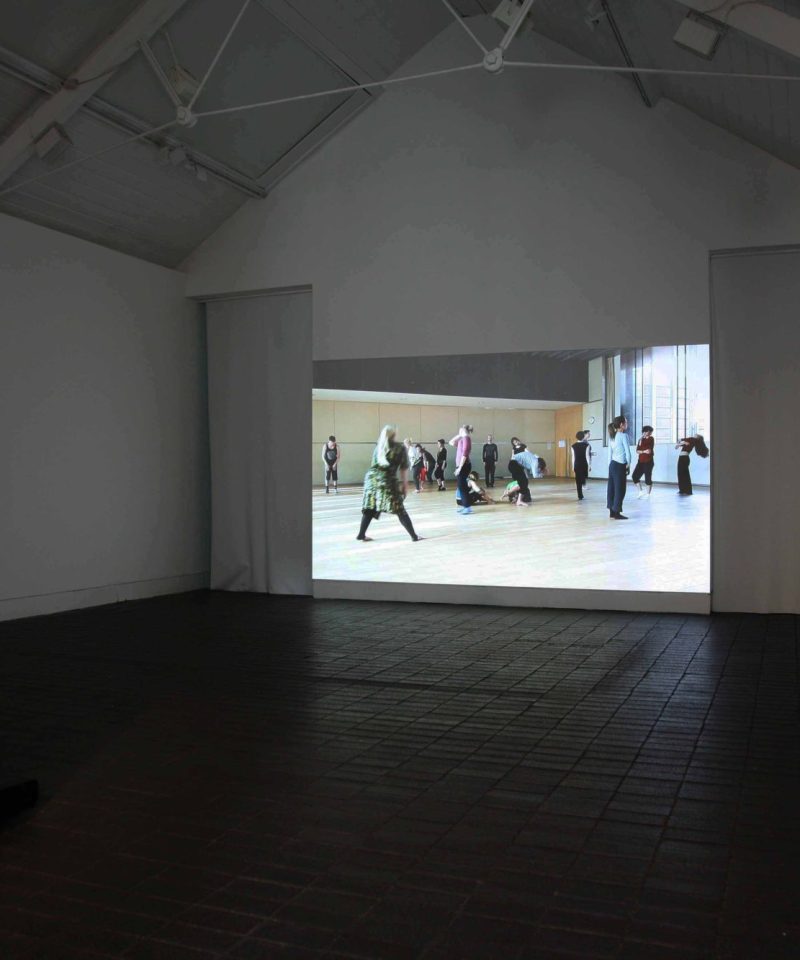The Hut Project. A name evocative of tinkerers down in the garden shed. But what’s being tinkered with? The grammar of art. The way we look at and receive exhibitions and the objects and typologies involved. The Hut Project scavenges the titbits of before and after the show, acting in the role the jester in order to unveil the absurdities of courtly life.
For Assembly, The Hut Project have made the video The Look of Performance (2012). A large rehearsal space gradually fills with dancers, each executing moves derived from the warm-up actions each undertakes before a performance. Each routine is individual, idiosyncratic. And each dancer exists in their own world – like Gillian Wearing in that shopping mall video.
The Hut Project’s work sits in a broad historical spectrum of performed institutional critique, from Andrea Fraser giving ‘subversive’ guided tours (Museum Highlights, 1989), to Tino Sehgal with his impromptu choral performers ‘upsetting’ the routines of contemplative gallery silence (his work This Variation, 2012, for this year’s Documenta 13 was performed in a darkened room so you couldn’t spot the performers).
The Look of Performance also links to a history of crossovers between art, dance and film. In the 1970s, performance for camera took off as a genre of its own, with Trisha Brown’s urban-intervention performances and Yvonne Rainer’s film-performances being exemplary. A massive archive of such footage was recently on view at the Move: Choreographing You exhibition at the Hayward Gallery in London (2010-11).
Evidently, the best dance is already self critical. Jerome Bel, step forward:
And dance has firmly entered the gallery. Here’s Boris Charmatz, a man who knows how to pace the White Cube:
The question is — do these practices of self-critical dance and self-aware art practices share a common purpose? Or are they simply talking to their own crowd? Does the Hut Project’s new work deliver to a dance audience? And how might a dance project be part of the dialogue of art, beyond simply sharing its floor space?


